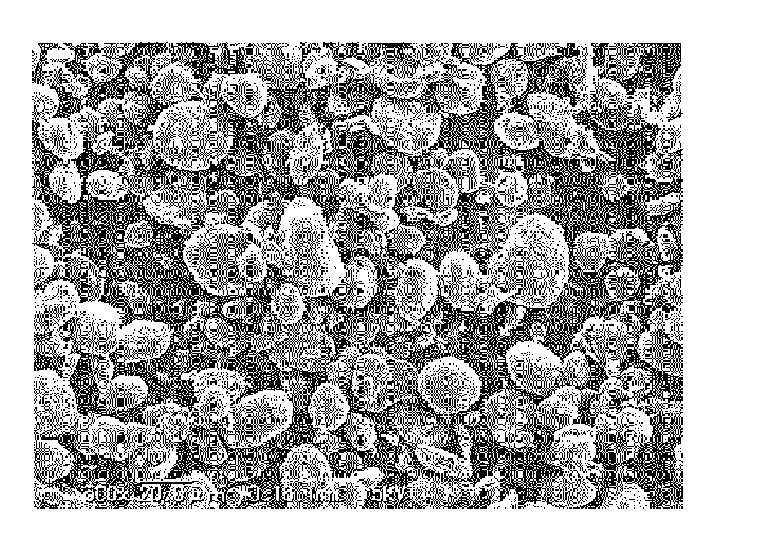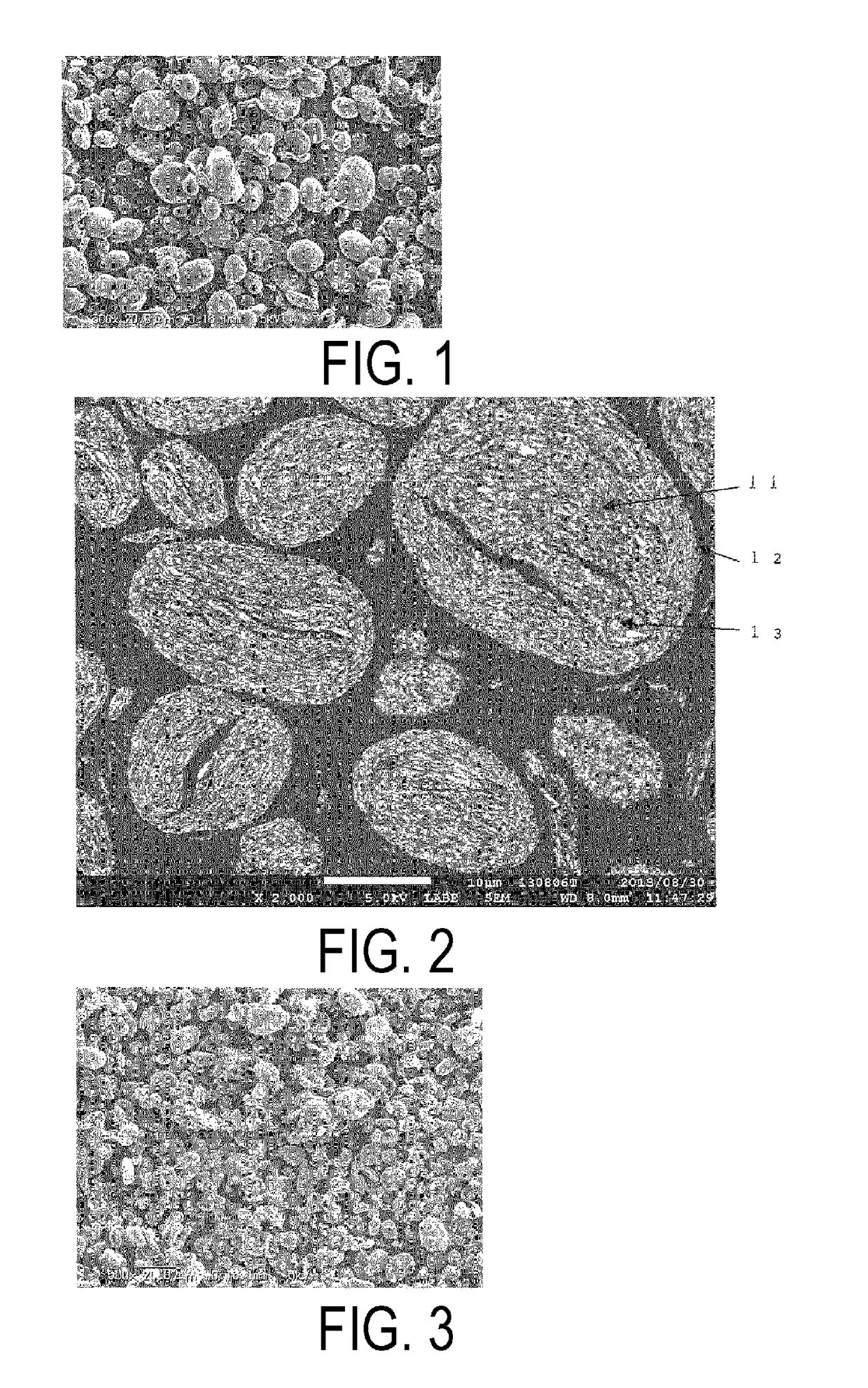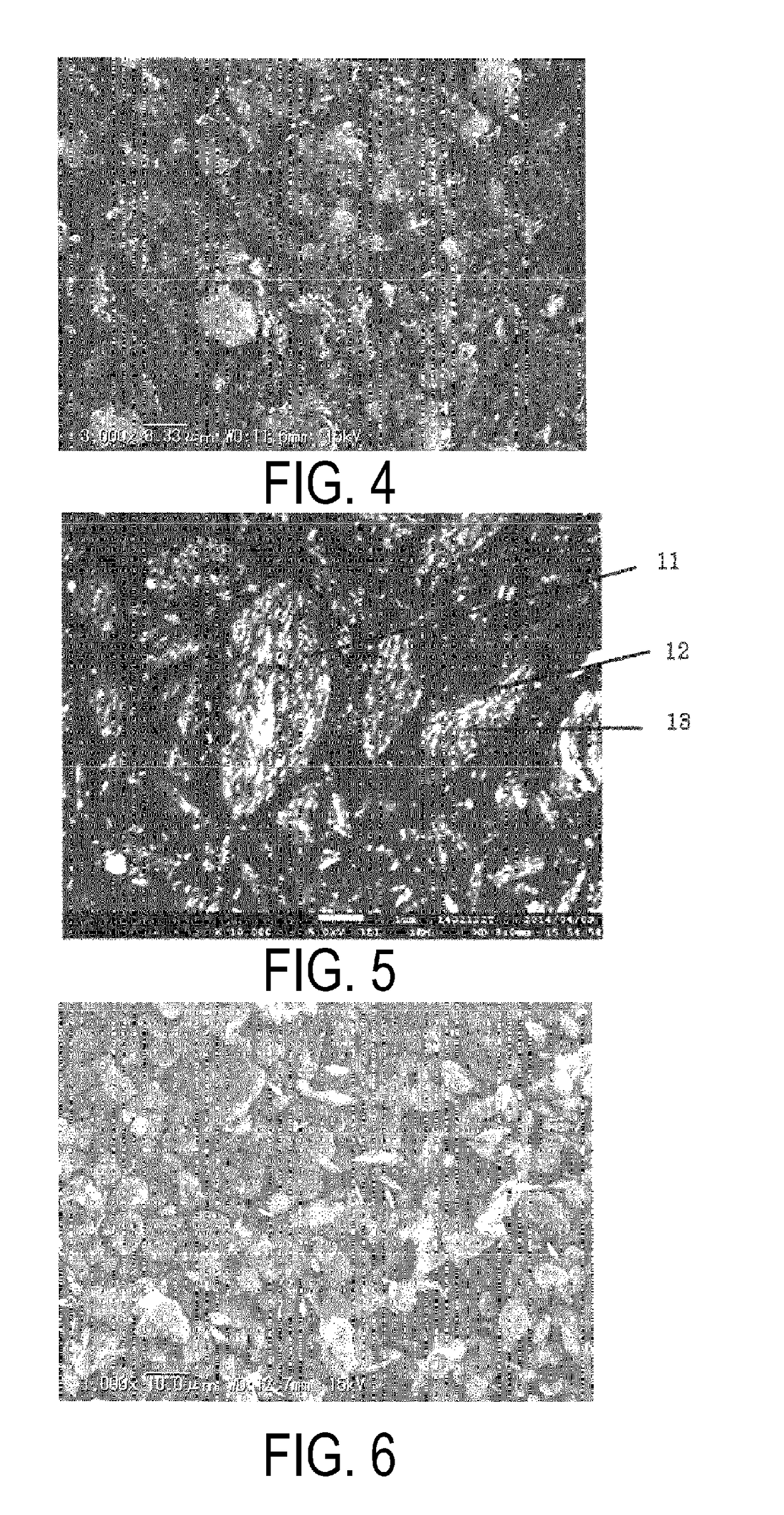Composite active material for lithium ion secondary batteries and method for producing same
a lithium ion secondary battery and composite active material technology, applied in the direction of cell components, final product manufacturing, sustainable manufacturing/processing, etc., can solve the problems of loss of conductivity, decrease in capacity after many cycles, performance does not meet the requirement, etc., to achieve excellent cycle characteristics, high bulk density, and high energy density
- Summary
- Abstract
- Description
- Claims
- Application Information
AI Technical Summary
Benefits of technology
Problems solved by technology
Method used
Image
Examples
example 1
[0208]A chemical-grade metallic Si (purity 3N) with an average particle size (D50) of 7 μm was mixed in ethanol at 25 wt %. The mixture was processed in a fine pulverizing wet beads mill using zirconia beads (0.3 mm diameter) for 6 hours and an ultra fine particulate Si slurry (an average particle size (D50): 0.3 μm, BET specific surface area when dried: 60 m2 / g) was obtained.
[0209]A natural graphite having a particle size (the width in the (200) plane direction) of 0.5 mm and a thickness of 0.02 mm was immersed in a solution (sodium nitrate 1 wt %, and potassium permanganate 7 wt % added in concentrated sulfuric acid) for 24 hours, then washed in water and dried. Thus, the acid-treated graphite was obtained. The acid-treated graphite was introduced in a vibrating powder feeder and fed into a mullite tube (length: 1 m, inner diameter: 11 mm) heated at 850° C. by an electric heater, using a nitrogen gas flow of 10 L / min as a carrier. Then the acid-treated graphite was discharged into...
example 2
[0221]36 g of the ultra fine particulate Si slurry prepared in the same manner as in Example 1, 18 g of the expanded graphite, 7.5 g of a resol-type phenol resin (weight average molecular weight (Mw): 490), and 2.4 L of ethanol were charged in a mixing container. Ultrasonic treatment was performed for 15 minutes. Then, the mixture was transferred to a rotary evaporator, rotated and heated in a warm bath heated at 50° C., depressurized to a vacuum by an aspirator. Thus the solvent was removed. Subsequently, the mixture was spread on a tray and dried in a draft chamber while ventilated for 2 hours. Then the dried mixture was passed through a mesh (2 mm aperture) and dried for another 2 days. Thus 32 g of the dried mixture (“freely settled” bulk density: 66 g / L) was obtained.
[0222]The dried mixture was processed for granulation / compaction by passing through a three roll mill twice to produce particles of 2 mm in size and 340 g / L of “freely settled” bulk density.
[0223]Next, these partic...
example 3
[0233]A chemical-grade metallic Si (purity 3N) with an average particle size (D50) of 7 μm was mixed in ethanol at 21 wt %. The mixture was processed in a fine pulverizing wet beads mill using zirconia beads (0.3 mm diameter) for 6 hours and an ultra fine particulate Si slurry (an average particle size (D50): 0.3 μm, BET specific surface area when dried: 100 m2 / g) was obtained.
[0234]The acid-treated natural graphite (particle size (width in (200) plane direction): 0.3 mm, thickness: 10 μm) was introduced in a vibrating powder feeder and fed into a mullite tube (length: 1 m, inner diameter: 20 mm) heated at 850° C. by an electric heater, using a nitrogen gas flow of 12 L / min as a carrier. Then the acid-treated graphite was discharged into atmosphere from the other end of the tube, gases such as sulfurous acid were exhausted to the upper part while an expanded graphite was collected in a stainless container at the lower part. The expanded graphite retained the width in the (200) plane...
PUM
| Property | Measurement | Unit |
|---|---|---|
| particle size | aaaaa | aaaaa |
| particle size | aaaaa | aaaaa |
| particle size | aaaaa | aaaaa |
Abstract
Description
Claims
Application Information
 Login to View More
Login to View More - R&D
- Intellectual Property
- Life Sciences
- Materials
- Tech Scout
- Unparalleled Data Quality
- Higher Quality Content
- 60% Fewer Hallucinations
Browse by: Latest US Patents, China's latest patents, Technical Efficacy Thesaurus, Application Domain, Technology Topic, Popular Technical Reports.
© 2025 PatSnap. All rights reserved.Legal|Privacy policy|Modern Slavery Act Transparency Statement|Sitemap|About US| Contact US: help@patsnap.com



